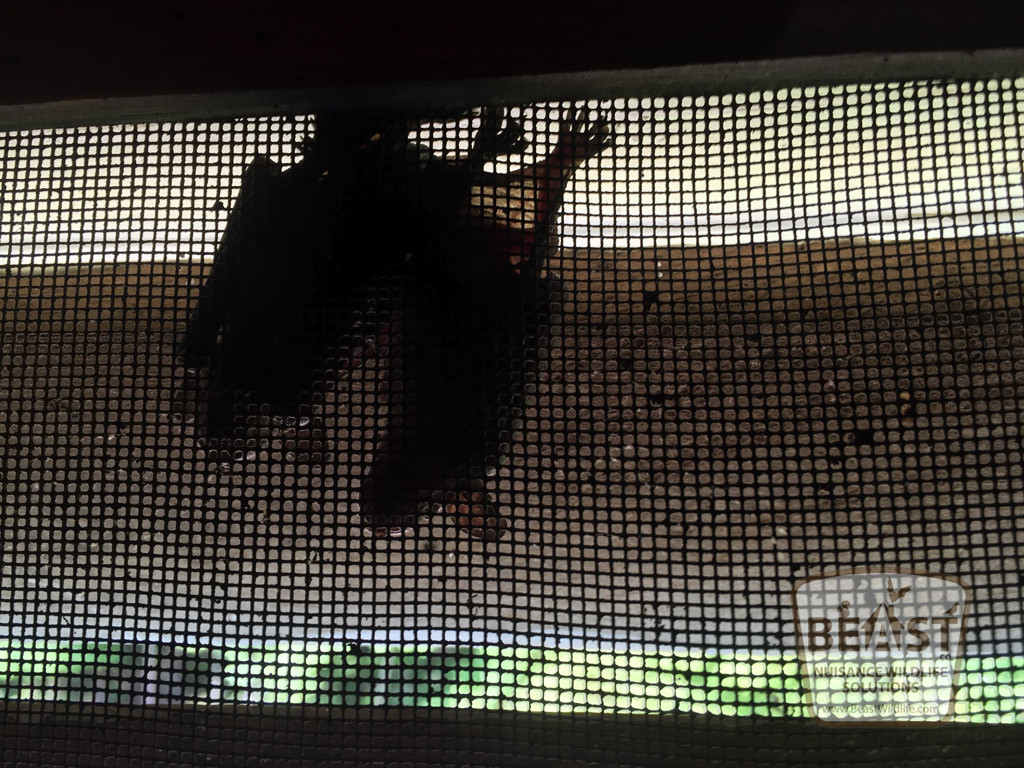
Live bat in living space
It is recommended to attempt to quarantine the bat in a single room if feasible, and close all other potential entry ways into other rooms. When a bat makes its way into the living space- make every reasonable attempt to keep visual contact with the bat at all times, due to the nature of bats being able to hide rather well.
Contact us for emergency removal pricing options (this varies based on location, time/ date, and areas the bats are in). Although we cannot guarantee to locate the bat (if it went back in a wall void/etc), we make recommendations about temporarily sealing the interior areas so it hopefully won’t happen again, and until we can provide an exterior bat exclusion quote for our client.
If the bat cannot be located- contact your healthcare provider regarding the next proper steps to take concerning rabies and similar issues. We cannot provide clients or the public with recommendations about rabies shots.
If you as the property owner decide to capture the bat yourself, we recommend you educate yourself on the proper ways to capture a bat, and submit it for testing if applicable . Bat conservation international, and CDC websites have some informative information on their sites about this.
Bat inspections
The inspection can take between 1 to 3 hours on most structures. We check soffits, fascia, eves, roof line, roof vents, chimney tops, brick and mortar joints, exhaust vents, flashing, trim, gable vents, accessible attic space, holes around pipes, miscellaneous voids and gaps, and any other potential areas on the structure . We determine the main entry areas, and possibly secondary areas. Providing a line itemized quote for exclusion work.
We exclude primarily with metal and high grade elastic sealants. We don’t utilize expandable foam products because it breaks down in weather, UV rays, and wildlife can chew thru it. We cut, bend and fabricate our metal to the area we’re excluding at. Prices for exclusion work vary on three factors. First is how many stories it is. Typically the higher off the ground, the higher the price. Second is the pitch of the roof, Substrates, the components of the building materials (what it’s made of ). Third is landscaping, if you have trees, bushes, plants, flowers, or if your landscaping is hilly; if there are fences to deal with for lifts and ladders to get around/ etc. All these are factors for the safety of our technicians and their ability to access the exclusion areas.
We send line itemized paperless quotes via email.
